 Today, we’d like to introduce you to the Tibetan and Qiang embroidery. These samples of embroidery definitely are worth seeing – they are bright, cheerful, highly detailed, and deeply spiritual. You could look at them for hours, distinguishing every small object from the whole picture, every stitch, and every embroidery technique. The craftswoman who is engaged in the Tibetan and Qiang embroidery for years – master Yang Huazhen – will share some of her knowledge about these techniques with us.
Today, we’d like to introduce you to the Tibetan and Qiang embroidery. These samples of embroidery definitely are worth seeing – they are bright, cheerful, highly detailed, and deeply spiritual. You could look at them for hours, distinguishing every small object from the whole picture, every stitch, and every embroidery technique. The craftswoman who is engaged in the Tibetan and Qiang embroidery for years – master Yang Huazhen – will share some of her knowledge about these techniques with us.
Master Yang Huazhen is a master of Tibetan embroidery who has been doing embroidery for many years. She knows everything about Tibetan and Qiang embroidery and is ready to share her story with us.
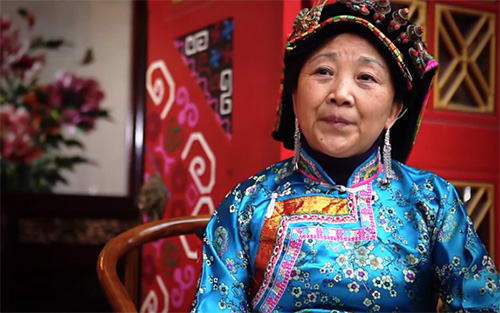
Master Yang Huazhen
In Tibet, mostly women over 50 years old master the skill of embroidery. The young ones prefer to look for jobs outside. They find embroidery too dull. This is why I’m so afraid that we may fail to hand it down if we don’t act right now.
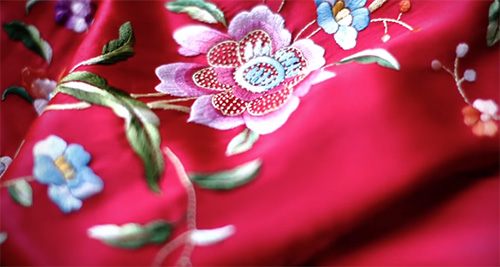
So I came up with an idea of combining the tradition with modern trends. Many of my students are the Han and we cooperate with Han designers often.

The greatest part of the embroidery is the ornament and the way it is created. It is very meaningful and symbolic. For instance, ornaments I make for parents are not the same as for the loved ones. There is a big variety of patterns – through them, I express my heart and my emotions.
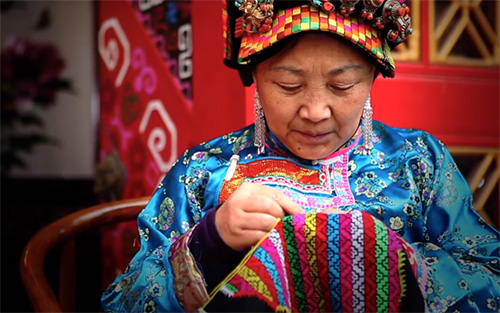
Nowadays, so many young people in relationships speak out “I love you” too straightforwardly. But I don’t think that it is the best way to express love. You can give a self-made handkerchief without saying a word. And the loved one will tell your heart right away. I find that love in folk culture is more profound and civilized. It will allow your boyfriend to know you better, and hear the true meaning of “I love you”.
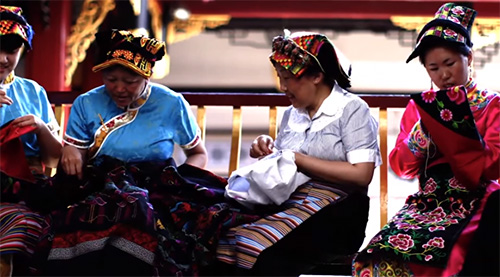
Stitch patterns of Tibetan and Qiang embroidery are interconnected with other China’s embroidery styles. The main difference is in the patterns and colors. Our ornaments represent our beliefs, our colors represent our nature, our landscapes that are vivid and bright. Just as the old saying goes: “Our national character is as vibrant as our nature”.

The highest level of embroidery is to make Buddhist images. It is hard to an extent that sometimes it takes a year, or 3 years, or at least several months to sew a holy image. This depends on what stitches you use and how delicate they are. This creates different works.

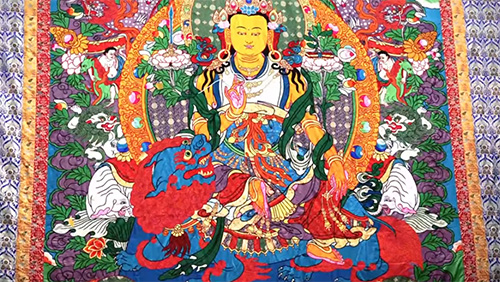
There should be no boundaries between nations. Although we speak different languages, our culture is interconnected, our hopes and wishes are the same.
Tibet is a historic region in China, on the Tibetan Plateau. It is a homeland for the Tibetan people and several other ethnic groups, including the Qiang people. Tibetan embroidery is colorful and deeply symbolic. It often depicts Buddha and various religious symbols. But also, floral patterns are very popular. Tibetan embroidery is always rich in detail and color.
Qiang is a Chinese ethnic group from Sichuan Province. There are about 310,000 of people who attribute themselves to Qiang, or Erma (as they call themselves). The Qiang embroidery is very colorful and bright, it depicts local flora and fauna. Qiang embroiders work with cotton cloth and silk threads; they use 16 types of stitches to create their masterpieces.
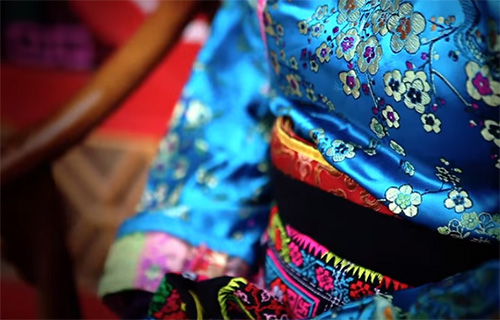
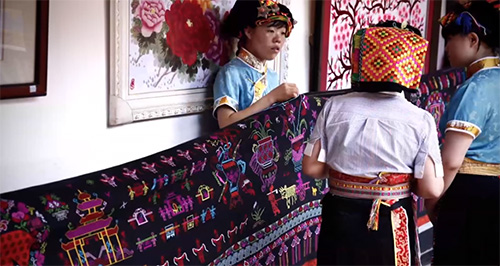

(c)


